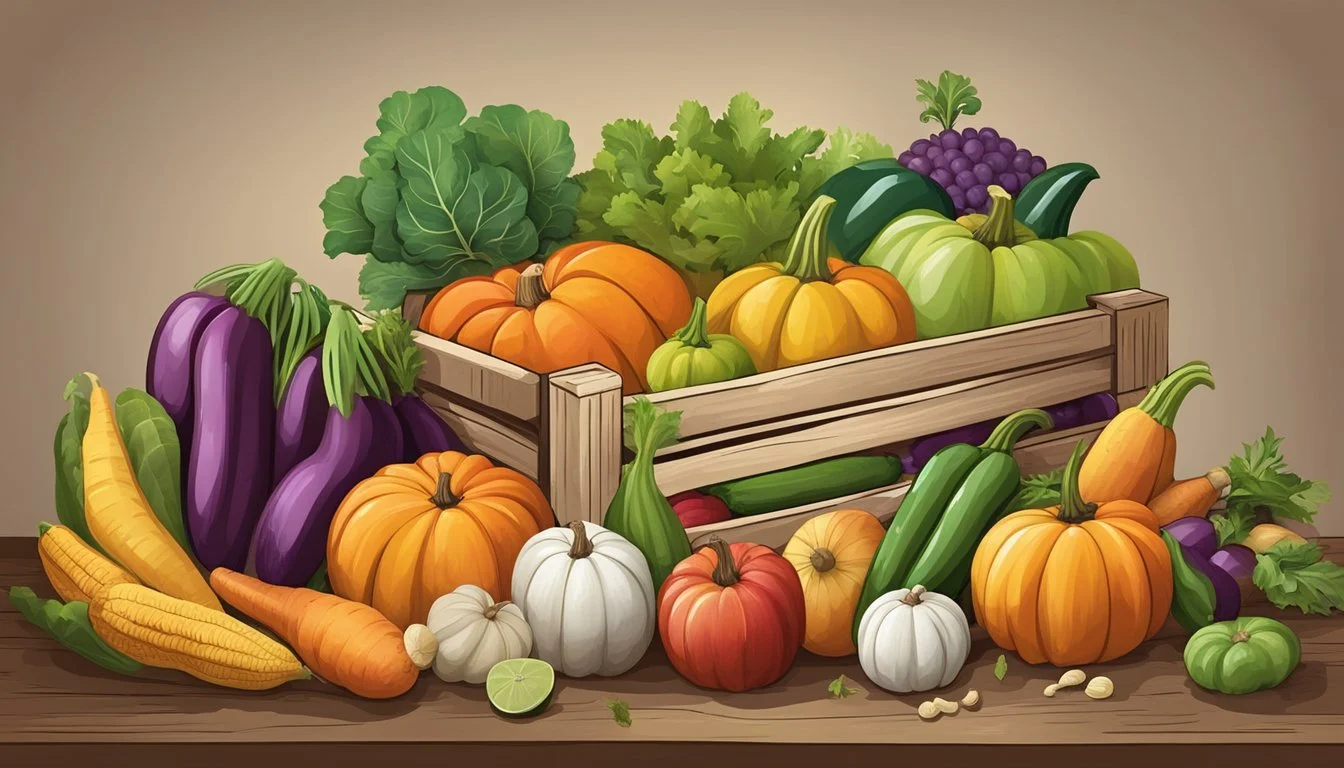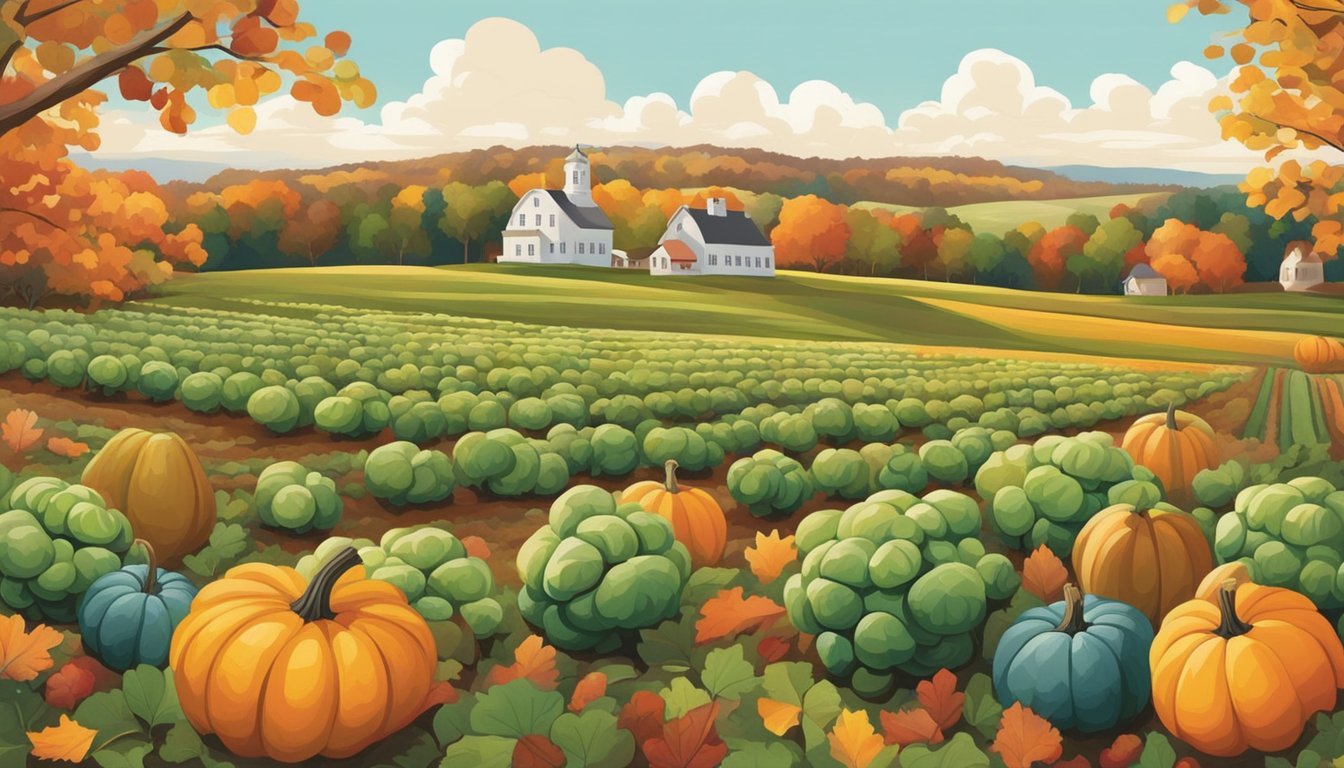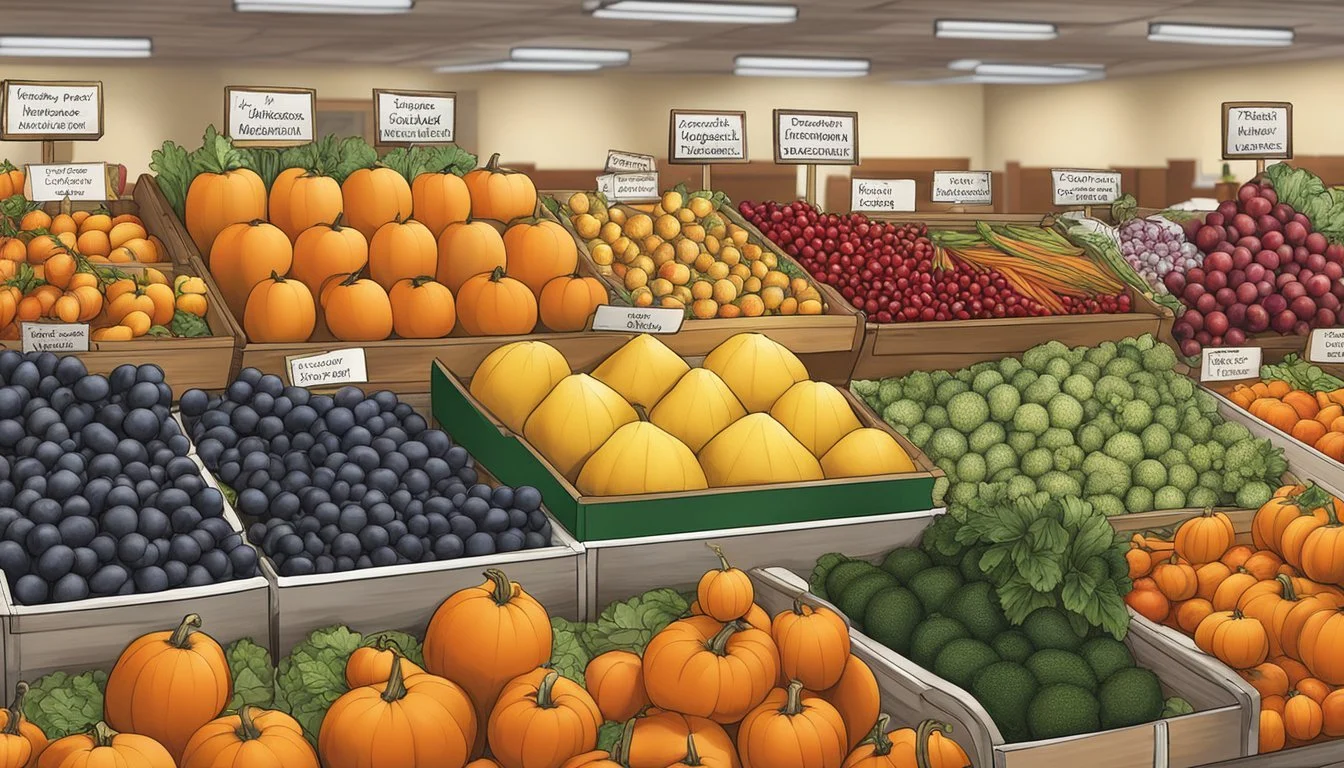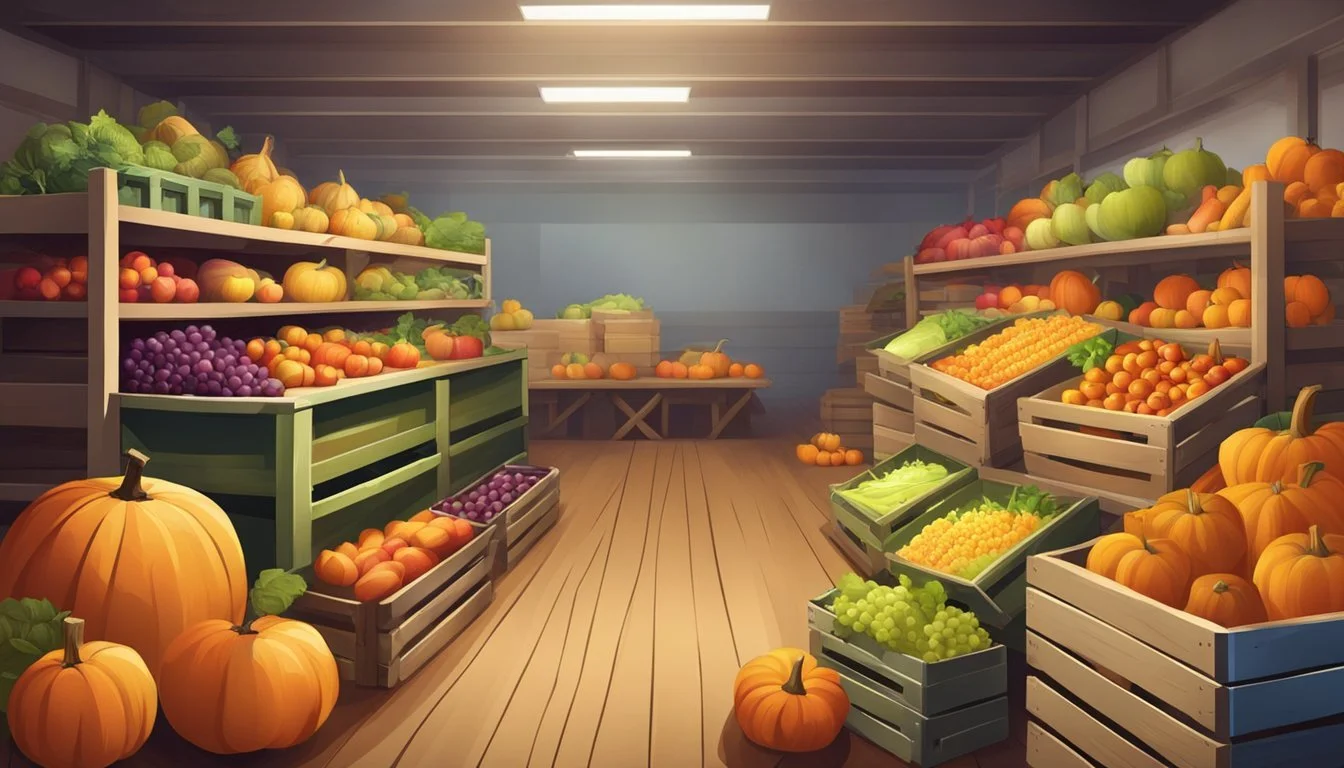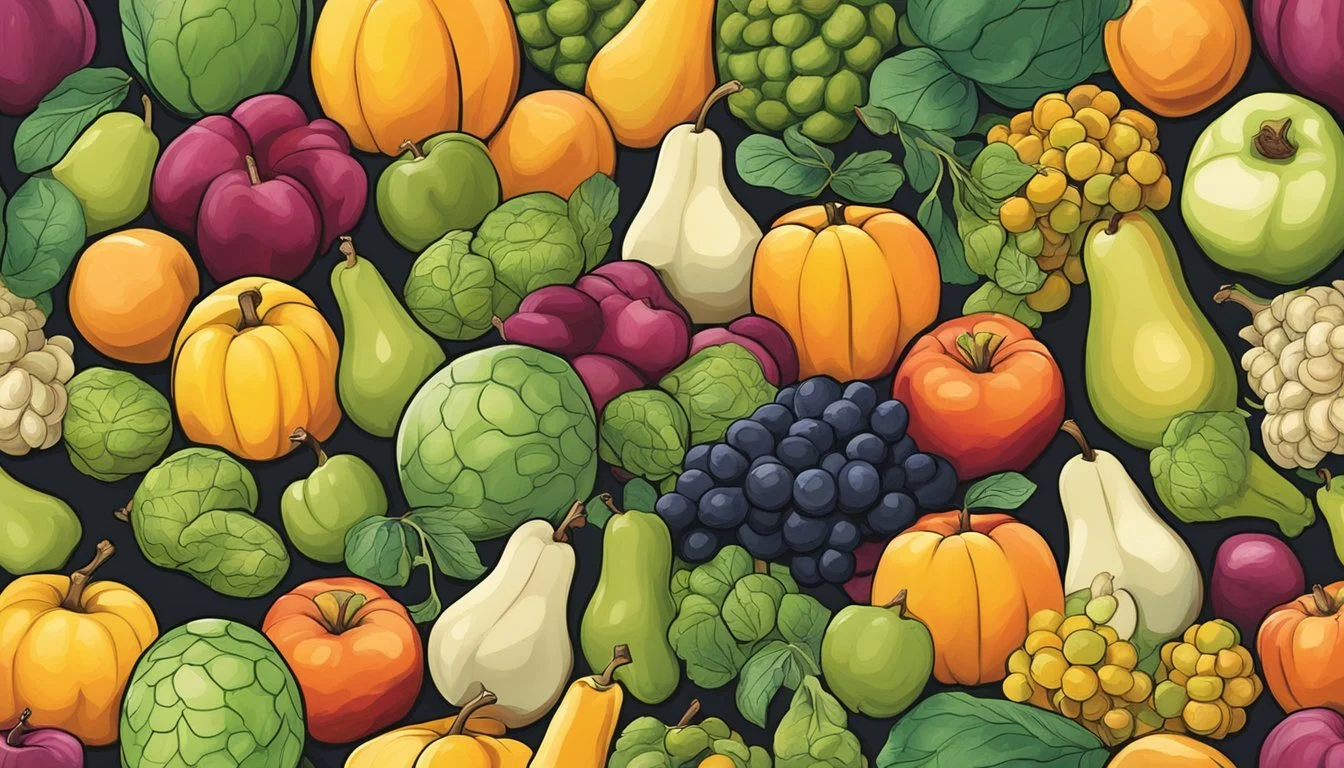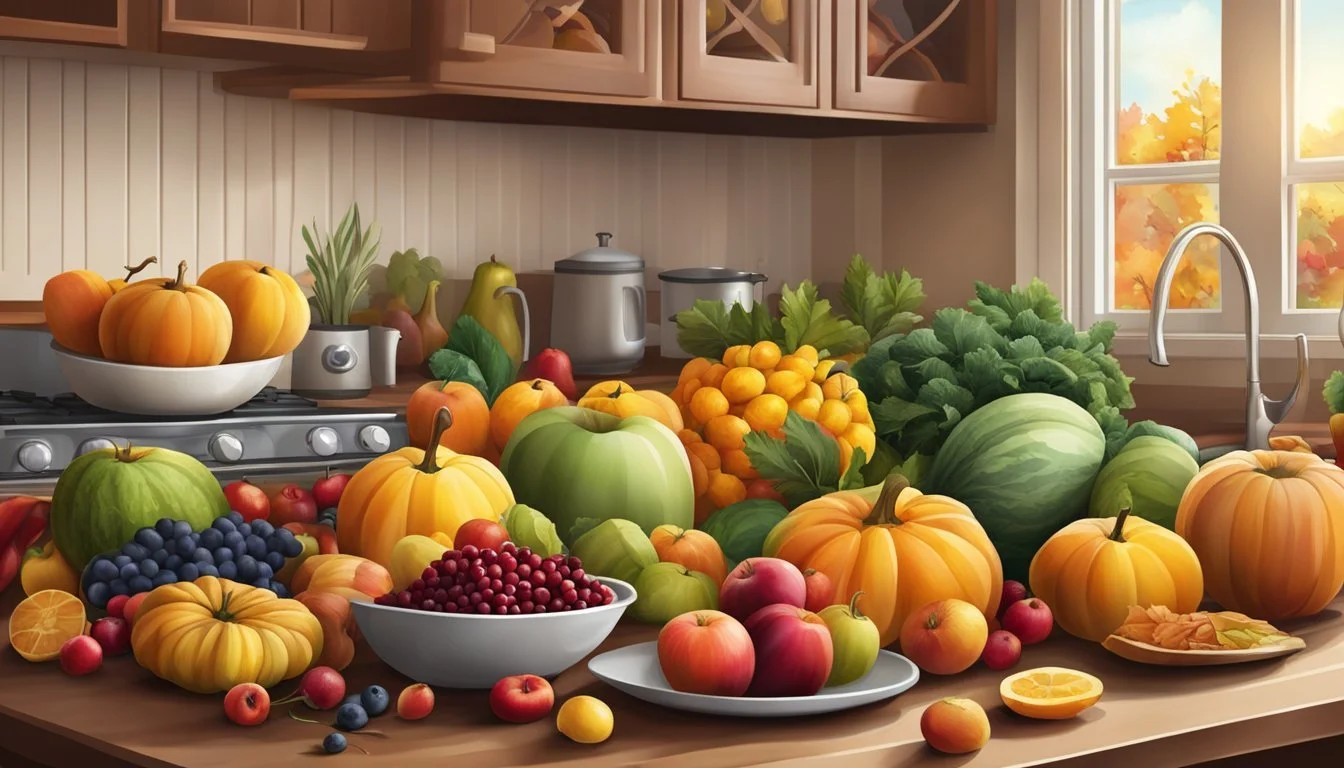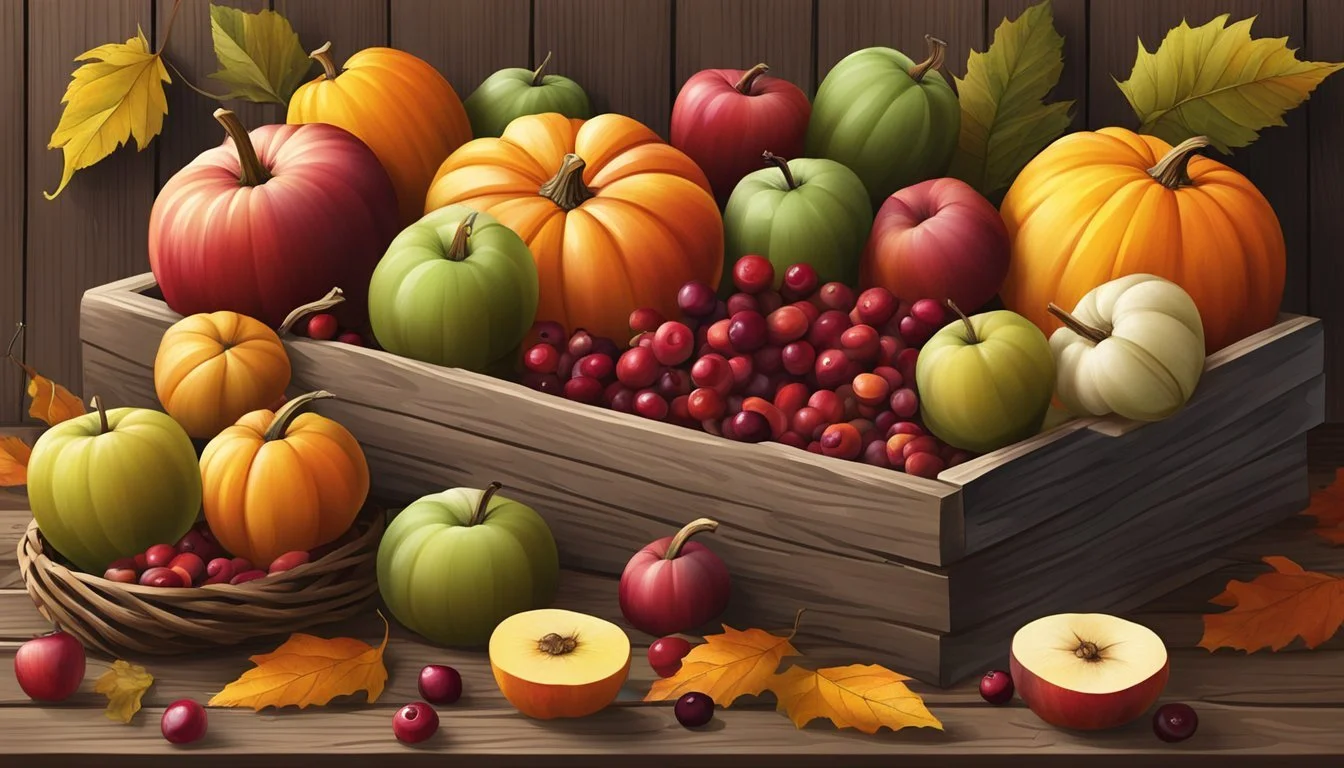Wisconsin Seasonal Fruit & Vegetables in November
Your Guide to Fresh Produce
This Article is Part of our Wisconsin Seasonal Fruit & Veg Calendar
Wisconsin's cooler climate and fertile soils lend themselves to a rich tapestry of seasonal produce, even as the year wanes into November. While many associate the harvest season with the burst of summer's bounty, November in Wisconsin still offers a variety of fruits and vegetables that thrive in the chilling temperatures. Farmers across the state work to bring these seasonal offerings to market, celebrating the end of the growing season with produce that ranges from hardy root vegetables to storage crops that can last well into the winter months.
During this month, residents and chefs alike turn to the robust flavors of cold-weather crops. Vegetables such as cauliflower and Brussels sprouts (how long do brussels sprouts last?)reach their peak in flavor after the first frost. Root vegetables like beets (how long do beets last?), carrots (how long do carrots last?), and parsnips, which have been sweetened by the colder nights, are readily available. Moreover, storage crops like potatoes, onions, and squashes can be found in abundance, providing a staple for hearty, warming dishes that are synonymous with late autumn.
While the fruit selection may be less varied than in the summer months, apples (how long do apples last?) and pears continue to feature prominently in Wisconsin's November produce. These fruits, commonly harvested in late fall, offer a crisp and juicy contrast to the earthy richness of the vegetables. Their versatility in both sweet and savory dishes makes them a favorite for seasonal recipes. With the knowledge of what's in season, consumers can make informed choices that support local agriculture and experience the full, nuanced flavors of Wisconsin's November harvest.
Seasonal Varieties of Fruits
November in Wisconsin is a time when the fall harvest brings fresh fruit to local markets, providing ripe and flavorful options for consumers. This selection is rich with fruits that have reached their peak and are ready for enjoyment.
Apples
Apples are a staple in Wisconsin's fall fruit harvest. With a variety of types including Honeycrisp, McIntosh, and Gala, they are widely available at farmers' markets. The cool climate contributes to a flavorful and crisp apple, often enjoyed fresh or in pies and ciders.
Cranberries
As one of the state's largest crops, cranberries are in full harvest during November. Wisconsin cranberry farms bustle with activity, as this tart fruit is collected for juices, sauces, and dried snacks. They are celebrated for their vibrant color and unique flavor.
Pears
Pears, such as the Bartlett and Bosc varieties, reach their peak during the fall months. These fruits are often cherished for their sweet, buttery flesh and are commonly found at markets in November, perfect for eating fresh or incorporating into desserts.
Pomegranates
While not as common in Wisconsin as other fruits, pomegranates still mark their presence in the fall season. Known for their jewel-like seeds and deep, rich flavor, pomegranates provide a unique option for those looking for something different from the local harvest.
Seasonal Varieties of Vegetables
As November signals the progression into winter in Wisconsin, local markets offer a selection of vegetables that thrive in the cooler temperatures or are available from storage. Seasonal eating ensures freshness and supports local agriculture. Shoppers can find an array of root vegetables, winter squash, hearty greens, and other resilient varieties that are perfect for nourishing autumn meals.
Root Vegetables
Root vegetables reach their peak during the chill of late fall. This group is known for its long shelf life and robust flavors, making them a staple for winter cooking.
Carrots: Ideal for stews and roasts, leaving a sweet, earthy flavor.
Parsnips: These can be mashed or roasted for a nutty sweetness.
Turnips: Their sharp taste softens with cooking, becoming mellow and tender.
Sweet Potatoes: Providing a versatile, rich flavor profile and deep nutritional value.
Winter Squash
Diverse in shape and size, winter squash varietals can be found abundantly in November’s markets. Their rich and creamy textures are well-suited for baking and soups.
Butternut Squash: Smooth, sweet, and perfect for pureeing.
Delicata Squash: Known for its edible skin and a quick cooking time.
Spaghetti Squash: Unique for its stringy, pasta-like flesh when cooked.
Acorn and Kabocha Squash: Excellent roasted, bringing out their natural sweetness.
Green Vegetables
Green vegetables that tolerate the cold are still available and offer a touch of brightness to hearty meals.
Brussels Sprouts: They become sweeter as the temperature drops, ideal for roasting or frying.
Chard: It retains its vibrant color and is a healthy addition to salads and sautés.
Kale (What wine goes well with kale?) and Spinach: Resilient greens that are perfect for nutritional boosts in smoothies, soups, and salads.
Other Vegetables
A few other vegetables remain fresh and can be found in local markets during this time.
Garlic: Its potent flavor is essential in countless recipes and is readily available.
Onions: A foundational vegetable that continues to grow well into the fall and stores well throughout the winter.
Harvest and Availability
In November, Wisconsin's agricultural focus shifts predominantly to the harvest of cool-weather crops and the selling of storage produce. Consumers find that farmers' markets and grocery stores are stocked with a robust selection of vegetables that withstand the chill of Wisconsin's fall.
Vegetables: Harvest time for kale, Brussels sprouts, and other hardy greens peaks as they develop a sweeter taste post-frost. Root vegetables, like carrots, parsnips, and beets, are dug up and readily available. One can also find a variety of squashes, including butternut and acorn, which are signature to the season.
Type Availability Kale Farm, Market, Store Brussels Sprouts Farm, Market Carrots Farm, Market, Store Parsnips Farm, Market, Store Beets Farm, Market, Store Squashes Farm, Market, Store
Fruits: While most fruit harvests have concluded, apples, which are picked earlier in the fall, remain available from cold storage, supplying the state's grocery stores and markets with a sweet remnant of the harvest season.
Storage and Preservation: Farmers and retailers turn to cold storage and preservation methods to maintain the freshness and availability of produce. Items like onions, potatoes, and winter squash are stored in cool, dry conditions to extend their shelf life and ensure a steady supply throughout the winter months.
Consumers seeking local produce should frequent Wisconsin's farmers' markets, where they can purchase directly from growers, or visit grocery stores that source from regional farms. The emphasis on locally grown, seasonal food supports Wisconsin's agricultural community and provides consumers with fresh, flavorful options even as the temperatures drop.
Wisconsin Specialties
In November, Wisconsin's harvest provides a range of unique and flavorful specialties. The state's cheese heritage stands strong throughout the year, with artisan producers offering a variety of cheeses that complement the seasonal produce.
Cranberries are a significant part of Wisconsin's agricultural identity, with the state being one of the leading producers in the United States. These tart berries are commonly harvested in October and can still be found fresh in markets during November or offered as value-added products such as cranberry sauce and preserves.
Wisconsin's wild rice (how long does wild rice last?) is a traditional staple, harvested in late summer to early fall. By November, it is typically available in local markets, retailing as a prized, nutty-flavored grain that is perfect for hearty autumn dishes.
As for produce, November marks the end of the line for many vegetables, but items like pumpkins and carrots—notable for their bright orange hue and versatility—are often still available from local farms. These can be found at markets, where they're celebrated for their role in fall cuisine.
Specialty Item Seasonality Notes Cheese Year-Round Compliments seasonal produce Cranberries October-November Fresh and value-added products Wild Rice Late Summer-Early Fall Sold in markets; nutty flavor Pumpkins Through November Integral to fall recipes Carrots Through November Available fresh from local farms
These specialties underscore the diversity of Wisconsin's agriculture and the richness of its food landscape. The state's markets come alive in November, offering an array of produce that captures the essence of fall.
Preparing and Storing Seasonal Produce
In the midst of November, Wisconsin's local produce like squashes and root vegetables can be found in abundance. These hearty selections can be enjoyed fresh, but they also store well, making them staples for winter salads and warming dishes like squash soup.
Storing Tips:
Squashes: Store in a cool, dark, well-ventilated area. They can last for several months if conditions are ideal.
Root Vegetables (e.g., carrots, beets): Place them in a container with moist sand or peat moss in your basement or other cool place.
Preparing for Fresh Consumption:
Rinse all vegetables under running water before eating.
Pat them dry and peel or chop as desired for consumption in fresh winter salads.
Certain vegetables, such as Brussels sprouts, should be stored in the refrigerator's crisper, where they can maintain freshness for several weeks.
Cooking Tips:
When making squash soup, roast the squash to enhance its natural flavors before pureeing.
Winter salads benefit from including fresh, crisp ingredients like kale and spinach, which should be washed and spun dry.
Preservation Techniques:
Consider blanching and freezing vegetables to preserve their quality.
Root vegetables may also be pickled or canned following safe preservation guidelines.
Always remember that proper preparation and storage not only extends the life of produce but can also enhance the flavors of seasonal dishes.
Nutritional Benefits of Seasonal Eating
Eating seasonally corresponds with consuming produce that is fresh and at the peak of its supply. Seasonal fruits and vegetables harvested at the optimal time often contain more nutrients compared to those that are out of season. For Wisconsin residents, November brings a selection of produce that is rich in vital nutrients and fiber, contributing to a balanced diet.
One key benefit is the maximization of the natural nutrients. For example, the green vegetables available during this month, such as chard and kale, are packed with vitamins A, C, K, and minerals like calcium and iron. These nutrients support the immune system and aid in bone health.
Fruits and vegetables in their prime also contain higher levels of antioxidants. These compounds play a crucial role in combating free radicals, which can contribute to inflammation and chronic diseases.
Here's a brief overview of the nutritional content found in some seasonal produce:
Cauliflower: High in fiber, vitamin C, and K.
Celery: Good source of vitamin K and antioxidants.
Chard: Rich in fiber, iron, and vitamin K.
Seasonal eating ensures that people have a multitude of fresh options that can lead to a more varied and nutrient-dense diet. Additionally, food waste reduces when produce is consumed within its season. Hence, Wisconsin's November produce offerings not only support individual health through high nutrient content but also contribute to environmental sustainability.
Recipes and Cooking Ideas
November in Wisconsin brings a bounty of seasonal produce perfect for warm, hearty meals. The array of available squashes, such as acorn and delicata, can be transformed into delicious soups or roasted to perfection as a side dish. They especially shine when spiced with a touch of cinnamon or nutmeg (how long does nutmeg last?), adding a comforting aroma to any kitchen.
Salads gain a seasonal twist with the incorporation of ingredients like roasted Brussels sprouts or cranberries, creating a balance of textures and flavors. With the last of the fall harvest, one can also experiment with adding roasted squash to their greens for added heartiness.
For those with a sweet tooth, the earthy sweetness of late-season fruits and vegetables inspire a variety of cookies and desserts. A squash puree, for instance, can add moisture and depth to cookie doughs. Cranberries, on the other hand, offer a tart contrast in oatmeal cookies or can be stirred into a jam for a homemade spread, perfect for pairing with fresh bread or layered in a dessert bar.
In Wisconsin, the tradition of preserving the harvest leads to an array of jams and preserves, with cranberries offering a tangy local twist to the pantry. These homemade jams can serve as delightful toppings for breakfast pastries or as a base for glazes and sauces to complement savory dishes.
Using these seasonal ingredients, anyone can create nourishing and flavorful meals that pay homage to Wisconsin's abundant November produce.
Food Preservation Tips
When preserving Wisconsin’s seasonal produce in November, it's essential to select high-quality fruits and vegetables as they dictate the end product's flavor and nutrition. For items like apples and root vegetables, which are still abundant in November, proper storage can extend their shelf life. Apples should be kept in a cool, dark place, while root vegetables prefer a cool, humid environment, such as a root cellar.
Freezing is an excellent method for many November vegetables like brussels sprouts and turnips. To ensure they retain their nutritional value and texture, one should blanch them before freezing. This process involves briefly boiling the vegetables and then plunging them into ice water.
Canning presents another reliable preservation method. Vegetables such as beets and carrots can be safely canned using the pressure canning method to prevent spoilage. Fruit preserves, like jams and jellies made from late-season fruits, can be stored using the water bath canning method.
Dehydrating is a suitable method for preserving nuts, such as walnuts, common in November. They should be stored in airtight containers in a cool, dry place to maintain their freshness and prevent rancidity.
When storing or preserving food:
Always maintain cleanliness to avoid contamination.
Label containers with the date of preservation.
Use proper sealing techniques for canning to ensure safety.
By adhering to these tips, one can confidently extend the enjoyment of Wisconsin’s bountiful November harvest well into the colder months.
Local Markets and Farms
In November, local markets and farms in Wisconsin offer a plethora of seasonal produce. Shoppers can visit farmer's markets where they can find locally grown vegetables and fruits, along with other farm products. Stevens Point Winter Farmers' Market, held on Saturdays from 8 a.m. to noon, showcases over 20 vendors during this time.
These markets tend to feature root vegetables like carrots and beets, while squash and late seasonal greens are commonly available. It is also a time where Wisconsin's storage crops, such as potatoes and onions, are in abundance.
Most farms pivot to meet the demand of the season by providing a variety of products in their on-site farm stands or at indoor market locations. Grocery stores might stock up on local produce as well, supporting regional agriculture and offering consumers a chance to buy fresh, even outside the traditional growing season.
Vendor Highlights:
Root Vegetables: Carrots, Beets
Squash Varieties: Butternut, Acorn
Late Greens: Kale, Collards
Storage Crops: Potatoes, Onions
Community-supported agriculture (CSA) also continues to thrive during this month, with many farms offering CSA shares that include November's harvest bounty. By participating in a CSA, residents support the local economy and receive fresh produce directly from the farm.
Moreover, while the selection is more limited than during the peak summer months, the markets operating in November still present a valuable opportunity for consumers to engage with and support local farmers. The atmosphere in these markets is a testament to Wisconsin's robust agricultural sector, which adapts to seasonal changes smartly and sustainably.
Conclusion
In Wisconsin, November marks the transition into the colder months, and with it, a shift in the available produce. Eaters who prioritize seasonal fruits and vegetables will find several nutritious options during this time. The most accessible produce are those which store well or thrive in cooler climates.
Vegetables such as sweet potatoes, brussels sprouts, and parsnips are prominent in November. They are not only versatile in the kitchen but also excellent sources of vitamins and fiber. Fruits are limited but apples, which have been harvested in the fall, remain abundant and can be found fresh due to their storability.
Wisconsin's commitment to local agriculture ensures that even as winter approaches, consumers can enjoy high-quality, local produce. Farm-to-table enthusiasts have the opportunity to support the local economy by frequenting farmers markets or signing up for community-supported agriculture (CSA) programs.
It is crucial to remember the health benefits of incorporating seasonal produce into one's diet. These crops tend to be at their peak in both flavor and nutrients, making them a smart choice for maintaining health during the cold season. Adapting to the seasonal changes in available fruits and vegetables helps to vary the diet and aligns with sustainable eating practices.
To summarize the seasonal offerings in Wisconsin during November:
Fruits: Primarily apples
Vegetables: Sweet potatoes, brussels sprouts, parsnips, and various types of squash and root vegetables
As the frost sets in, these hearty options become staples for Wisconsin residents, reflecting both the state's agricultural prowess and its residents' ability to adapt their diets with the changing seasons.


